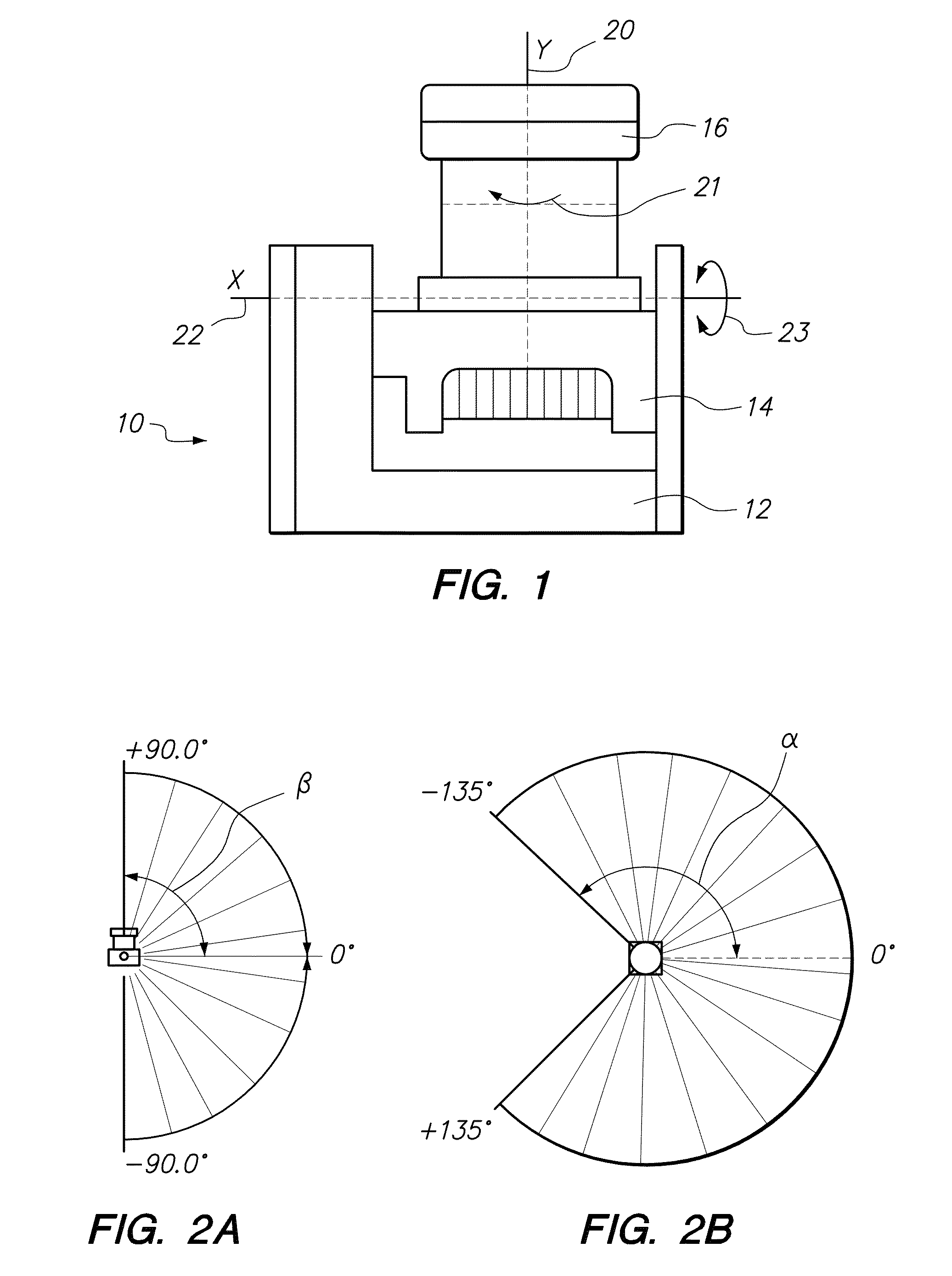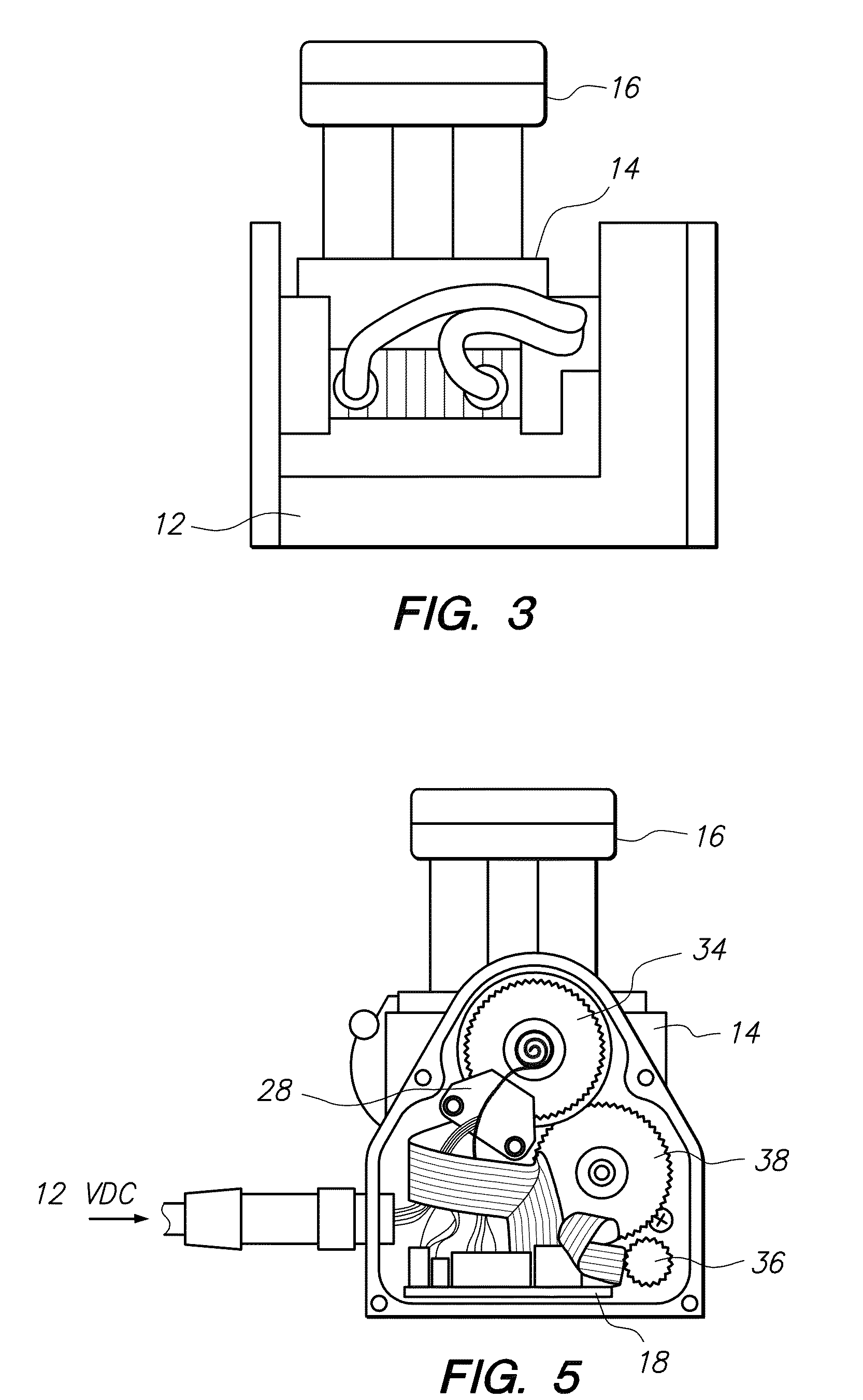Nodding mechanism for a single-scan sensor
a sensor and mechanism technology, applied in the field of single-scan sensor systems, can solve the problems of difficult maintenance, technical, mechanical, financial, etc., and achieve the effect of improving the accuracy of the detection results, and avoiding the loss of data
- Summary
- Abstract
- Description
- Claims
- Application Information
AI Technical Summary
Problems solved by technology
Method used
Image
Examples
Embodiment Construction
[0024]Referring initially to FIG. 1, a nodding single-scan system according to several embodiments of the present invention is shown and is generally designated by reference character 10. As shown in FIG. 1, system 10 can include a base 12 and a nodder / nodding mechanism 14 that can be pivotably mounted to base 12 so that it rotates around x-axis 22 in the direction indicated by arrow 23. A single-scan sensor 16 can be fixed to nodder 14. The operation of sensor 16 and nodder 14 can be manipulated via a controller 18, which is located internally within base 12 and shown schematically in FIG. 4.
[0025]For purpose of this disclosure, a single-scan sensor can be defined as a sensor that can receive data in single plane. Also, for the present invention according to several embodiments, the sensor 16 can be a Hokuyo UTM-30LX laser sensor. However, other single-scan laser sensors, as well as lidar sensors and the like, could be used to practice several embodiments of the present invention. ...
PUM
 Login to View More
Login to View More Abstract
Description
Claims
Application Information
 Login to View More
Login to View More - R&D
- Intellectual Property
- Life Sciences
- Materials
- Tech Scout
- Unparalleled Data Quality
- Higher Quality Content
- 60% Fewer Hallucinations
Browse by: Latest US Patents, China's latest patents, Technical Efficacy Thesaurus, Application Domain, Technology Topic, Popular Technical Reports.
© 2025 PatSnap. All rights reserved.Legal|Privacy policy|Modern Slavery Act Transparency Statement|Sitemap|About US| Contact US: help@patsnap.com



